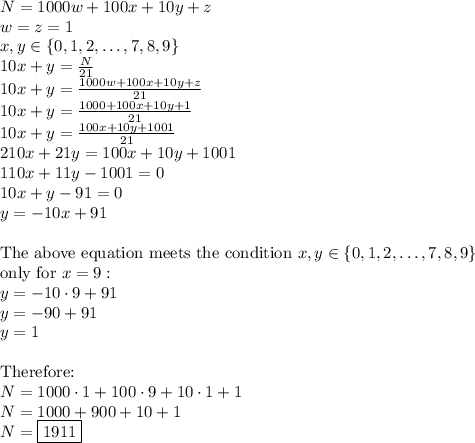Both the leftmost digit and the rightmost digit of a four-digit number
n are equal to 1. when...

Mathematics, 19.08.2019 06:30 alogoro
Both the leftmost digit and the rightmost digit of a four-digit number
n are equal to 1. when these digits are removed, the two-digit number
thus obtained is n ÷ 21. find n.

Answers: 1


Other questions on the subject: Mathematics


Mathematics, 21.06.2019 21:50, shay68596
What is the next step in the given proof? choose the most logical approach. a. statement: m 1 + m 2 + 2(m 3) = 180° reason: angle addition b. statement: m 1 + m 3 = m 2 + m 3 reason: transitive property of equality c. statement: m 1 = m 2 reason: subtraction property of equality d. statement: m 1 + m 2 = m 2 + m 3 reason: substitution property of equality e. statement: 2(m 1) = m 2 + m 3 reason: substitution property of equality
Answers: 3

Mathematics, 22.06.2019 00:40, ggg509
Atest consists of 10 multiple choice questions, each with 5 possible answers, one of which is correct. to pass the test a student must get 60% or better on the test. if a student randomly guesses, what is the probability that the student will pass the test?
Answers: 2
You know the right answer?
Questions in other subjects:








Computers and Technology, 10.03.2020 00:51





